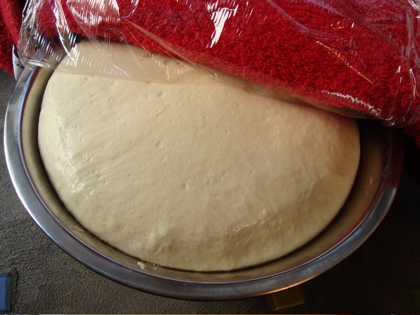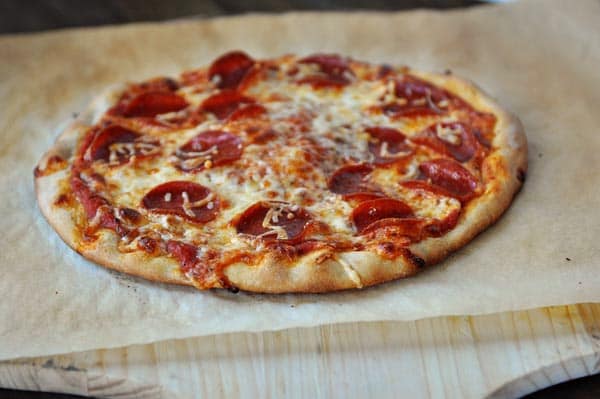Healthy Pizza Recipes Biography
source(google.com.pk)
When most folks think of junk food somehow pizza gets lumped into the same category as Coca Cola and Pop Rocks. Poor pizza. I beg to differ. At my house, pizza is part of our healthy diet. Italians have been eating tomato pie for hundreds of years, and traditional cultures have been eating similar flat bread dishes since way before that.
So why the giant chasm of opinion about pizza’s health food status?
Well, for starters, most modern pizzeria pizzas (or the freezer section varieties) are made with over-processed wheat flour; commercial yeast, low fat mozzarella cheese from factory farmed cows; tomato sauce made with sugar, refined salt, nasty vegetable oils and probably BPA if it comes from a can; plus meat toppings filled with nitrates, antibiotics, and hormones. Yes, that sounds like junk to me too.
The fact is, when you make pizza with REAL wholesome ingredients, it is nutrient dense and even more delicious.
Using sprouted wheat flour makes your pizza more digestible and provides more bio-available nutrients than regular flour. To be super ‘real food’ about it, this crust would be made with a sourdough starter too. Instead, I’ve taken the short cut of using dry active yeast, but I buy an organic yeast that is processed without chemicals and is GMO-free. Cheese and meat from pasture-raised animals and seasonal veggies round out the health food profile of this classic pizza dish.
But the best part about this healthy pizza recipe? It tastes like straight up pizza. Simple, comforting, and oh-so delicious.izza is one of those things that have no substitute. When you have cravings for pizza, nothing else will do! But it goes without saying that most pizze (Italian plural! how fancy of me) are not good for you. So I created a low fat gluten free vegan pizza that’s healthy as it is satisfying!Once the sauce is done and the crust is out of the oven, you may spread the sauce over the pizza and cover it with vegetables of your choosing. I used mushrooms, grape tomatoes, corn, broccoli, a golden beet, red pepper, yellow squash, and red onion. Place back into the oven for about 20 minutes, or until the crust is to your liking and the veggies are thoroughly cooked.
If you’d like a cheezy sauce, I made one as well! **Note: I baked it with the pizza after it had been in the oven about ten minutes, but I think it would taste better/have a nicer texture as a dipping sauce or poured over the finished pie. Baking it changed the consistency and flavor some Pizza is undoubtedly one of our favourite take out foods. However, it has also become a very difficult food to digest due to the combination of refined wheat, sugary sauces, contaminated cheeses, and nitrate filled meats. It’s time to make pizza healthy, and we start with the crust and move our way to the toppings.
Purpose
We don’t want to give up pizza…but we can’t continue to eat it the way it is typically prepared and expect our body to feel good about it. The good news is pizza can still be as good as you remember it by making a few simple switches so that your ingredients are not as harmful to your gut. We start with an easier digestible grain in quinoa, and substitute the toppings with something a bit more nourishing, while still remaining delicious.
Equipment Required
Good quality blender
12 inch skillet
Ingredients
Crust
1 cup quinoa (cover with enough water to soak)
1/4 grapeseed oil or olive oil
1/2 cup filtered water
1/2 tsp sea salt
1/2 tsp garlic powder
1/2 tsp italian seasoning
Sauce
1 cup sun-dried tomatoes, soaked for 2 hours and drained
1 medium tomato
3 tbsp cold pressed olive oil
2 large pitted dates
1 clove garlic
1 tsp salt
1 tsp italian dressing
1/2 tsp ground black pepper
Directions
Crust
Place quinoa in bowl and pur in enough water to cover. Let it soak for 8 hours.
Preheat oven to 450F. Take large, 12 inch skillet and brush with oil. Place in oven to preheat.
Drain quinoa and rinse thoroughly, then place in blender.
Add most of water and seasonings and blend. Add more water as needed until batter resembles that of pancakes.
Once oven is heated, pull out skillet and pour the batter onto it and quickly spread it out evenly across the bottom. Place back in oven and bake for 10 minutes or until underside is well browned and starting to crisp.
Use large spatula and carefully flip the crust.
Bake for another 10 minutes, and pull out of oven.
Sauce
Place all ingredients into high speed blender, and blend until smooth.
Assembly
Add sauce to top of pizza crust and spread evenly with spatula.
Add veggies, and organic chicken breast or grass feed beef, if desired.
Add daiya, feta, or goat cheese on top, if desired.
Put back in oven for additional 5-7 minutes, or until cheese is melted.
Healthy Pizza Recipes


Healthy Pizza Recipes


Healthy Pizza Recipes


Healthy Pizza Recipes


Healthy Pizza Recipes


Healthy Pizza Recipes


Healthy Pizza Recipes


Healthy Pizza Recipes


Healthy Pizza Recipes


Healthy Pizza Recipes









































